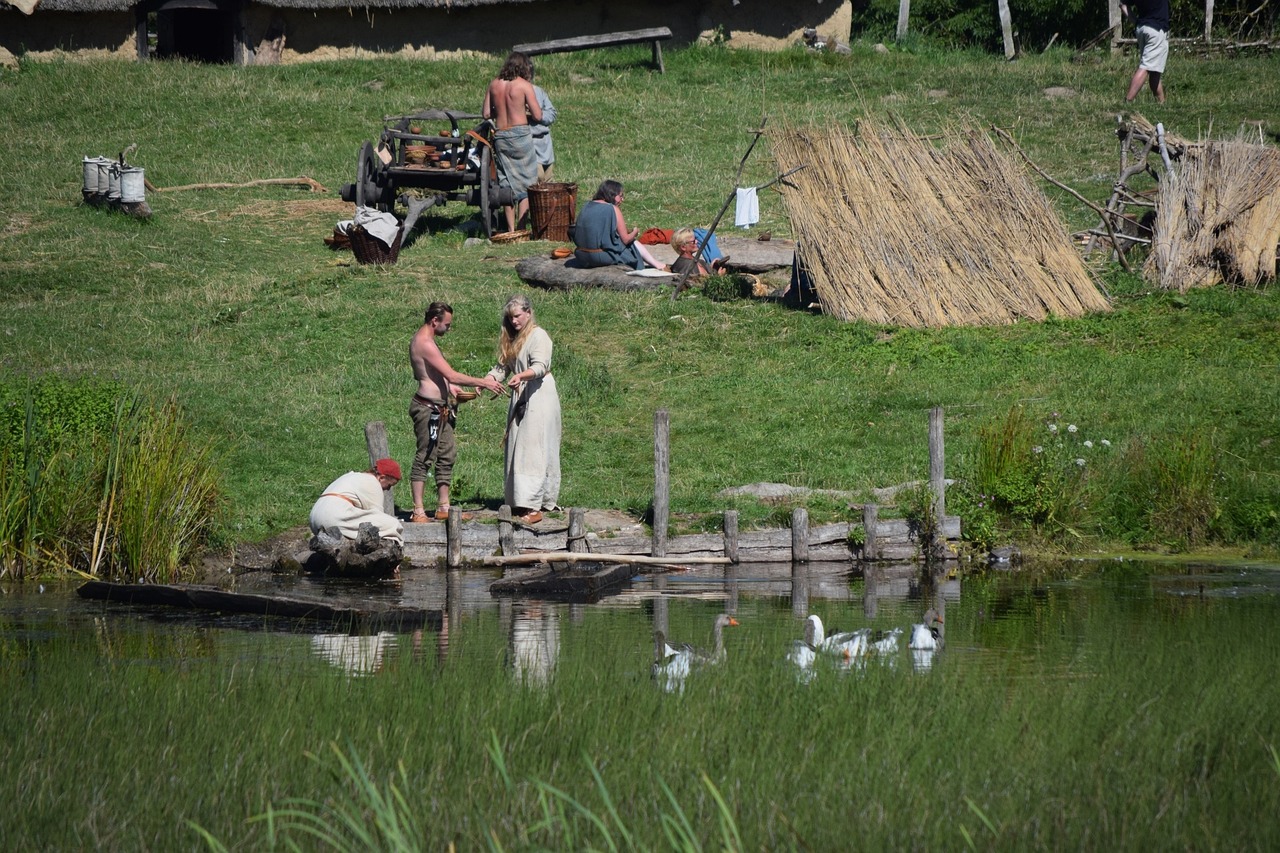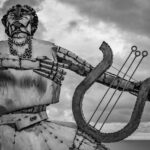Viking Cosplay: An In-Depth Guide for Authentic Viking Costumes
Viking cosplay has surged in popularity, providing a thrilling avenue for individuals to delve into the exquisite traditions and legacies of the Vikings. Whether you’re an aficionado of history, intrigued by Norse myths, preparing for a Viking reenactment, or simply seeking to stand out at a themed gathering, Viking cosplay allows you to awaken your inner warrior.
This guide will explore various aspects of Viking costumes for both men and women, offering essential tips and insights to help you create an authentic and compelling look. From the fundamental elements of Viking attire to accessories, do-it-yourself (DIY) options, and how to integrate Norse mythology, we’ve got every detail covered.
Key Highlights:
- Immerse yourself in the world of Viking cosplay and the cultural significance behind it.
- Uncover vital elements of Viking costumes tailored for men and women.
- Learn about genuine Viking accessories and their incorporation into your cosplay.
- Master the craft of DIY Viking attire with clear, step-by-step guidance.
- Weave elements of Norse mythology into your dress for an enriched experience.
Understanding the Origins of Viking Cosplay
To fully appreciate Viking cosplay, it’s necessary to recognize its historical significance. The Viking Age, spanning from the late 8th to the 11th century predominantly in Scandinavia, was an era characterized by exploration, commerce, and conquest. Known for their exceptional seafaring prowess and martial skills, Norse warriors earned a fearsome reputation around Europe, leaving a formidable influence in diverse regions, including England, Ireland, and even North America.
The fascination with the Viking Age is ever-present in contemporary culture, manifesting in films, television shows such as “Vikings,” and video games like “Assassin’s Creed Valhalla.” This revival has led to a growing interest in Viking-themed cosplay, which empowers enthusiasts to represent these legendary warriors.
By exploring Viking cosplay’s roots, we arm ourselves with the knowledge needed to construct accurate Viking attire that echoes the formidable spirit of these historic figures.
Essential Elements of a Men’s Viking Costume
For an authentic Viking portrayal, it is crucial to include certain components in your ensemble. Here’s a look at the essential elements for men’s Viking costumes:
- Tunic: The centerpiece of any Viking outfit, the tunic should be made from natural materials like linen or wool, ideally in earthy tones. A loose fit reaching mid-thigh is optimal.
- Trousers: Opt for loose-fitting trousers crafted from similar fabric to the tunic. They should fall below the knee for comfort and mobility.
- Footwear: Simple leather boots or shoes are standard for Vikings. Neutral-colored, sturdy leather is ideal for a historically accurate appearance.
-
Belt: A broad leather belt is integral for securing your tunic and trousers. A belt embellished with unique metal designs adds distinct Viking character.
-
Hat or Hood: Viking headgear varies by region and time; options range from conical hats to hoods accented with fur.
-
Pouch: A leather pouch for carrying personal effects is typical; this accessory can be conveniently attached to a belt.
-
Cloak: A wool or heavy fabric cloak provides warmth and enhances the overall attire. Choose a color that complements your outfit.
-
Accessories: Accentuate your Viking warrior outfit with arm rings, necklaces, and brooches crafted with intricate designs.
Authentic Accessories for Men’s Costumes
Accessories significantly elevate any Viking ensemble. Examine various components, from jewelry and brooches to shields and weapons that embody the Viking spirit:
- Jewelry: Choose pieces like necklaces featuring Thor’s hammer, arm rings, and ornate rings made from sterling silver or bronze.
-
Shields and Weapons: A genuine Viking shield doubles as both a decorative and functional item. Opt for wooden shields with detailed designs and select weapons such as axes, swords, or spears that reflect your costume’s aesthetic.
The Warrior Persona in Viking Cosplay
For those wishing to embrace the warrior spirit, Viking cosplay reveals a fascinating dimension. To create a fierce Viking warrior appearance, contemplate the following:
- Armor: Authentic Viking armor includes a robust leather or chainmail chestplate, along with arm guards and greaves for dramatic effect.
-
Weapons: Choose a weapon like a sword, axe, or spear that aligns with your character to bolster your warrior portrayal.
-
Color Palette: Earthy tones add to the rugged nature of battle attire, enhancing your portrayal’s authenticity.
-
Warrior Accessories: Complete your look with helmets featuring horns, decorative belts, and wrist cuffs to accentuate your Viking character.
Authentic Women’s Viking Costume Components
Viking cosplay is equally engaging for women, allowing them to create captivating Viking looks. Here’s how to achieve an authentic women’s Viking costume:
Hangerock and Tortoise Brooches
The hangerock, a key fashion piece, is a sleeveless overdress worn over a basic dress, typically fastened with tortoise brooches. This piece not only adds elegance but also showcases the artistry of Viking craftsmanship.
Choosing the Right Fabrics and Patterns
Viking women’s attire was predominantly made from natural materials like wool and linen. When selecting patterns, seek out intricate geometric designs inspired by historical artifacts.
Crafting Your Viking Costume: The DIY Method
If you’re inclined towards crafting, a DIY approach gives you the freedom to design a costume that aligns with your personal style:
- Materials: Gather natural, sturdy fabrics for authenticity. Leather and metal components enhance accessory authenticity.
-
Construction Steps:
- Tunic: Cut and sew your tunic from your chosen fabric.
- Trousers: Follow a similar method to create comfortable trousers.
- Accessories: Assemble your accessories following selected materials to suit your design.
- Final Touches: Add embellishments for an authentic finish.
Infusing Norse Mythology into Your Cosplay
Norse mythology provides vibrant inspiration for suitable Viking characters. Undertake research on various gods and warriors from the lore and integrate guidance and symbols into your costume. This practice not only enriches your portrayal but also deepens your connection to Viking culture.
Family and Children’s Viking Costume Ideas
Viking cosplay can be a family affair, inspiring the younger generation. Coordinating Viking costumes can lead to delightful family experiences at themed events or during festive gatherings.
Ideas for Children’s and Family Costumes
For children:
– Mini helmets, tunics, faux fur accents, and toy weapons can be standout choices.
For families:
– Matching tunics, coordinated colors, and thematic props can enhance the fun.
Conclusion
This comprehensive guide to Viking cosplay has explored the intricate components of Viking costumes for all ages. Attending Viking-themed events, or preparing for Halloween can allow you to step into the sandals or boots of legendary Norse warriors. With a foundational understanding of Viking fashion and accessories, combined with DIY crafting techniques, you can create an authentic Viking look that resonates with history and adventure.
Immerse yourself in Viking heritage through the art of cosplay—where creativity and culture unite to celebrate a storied past.





